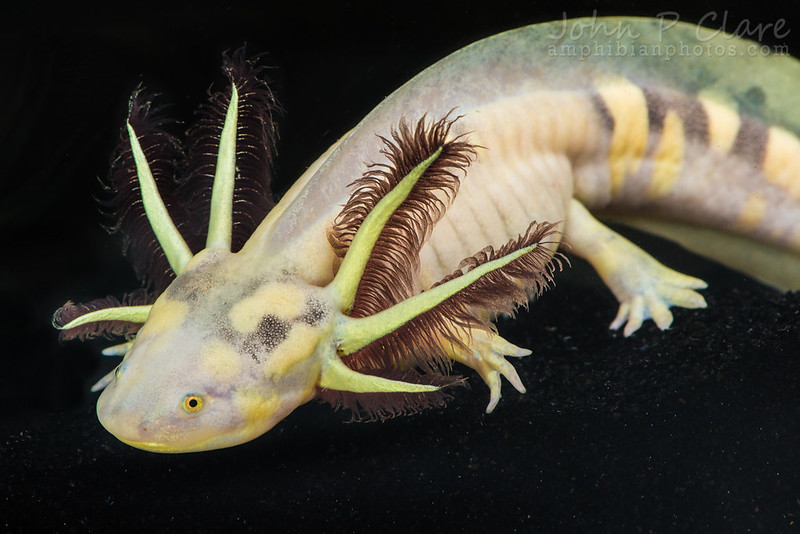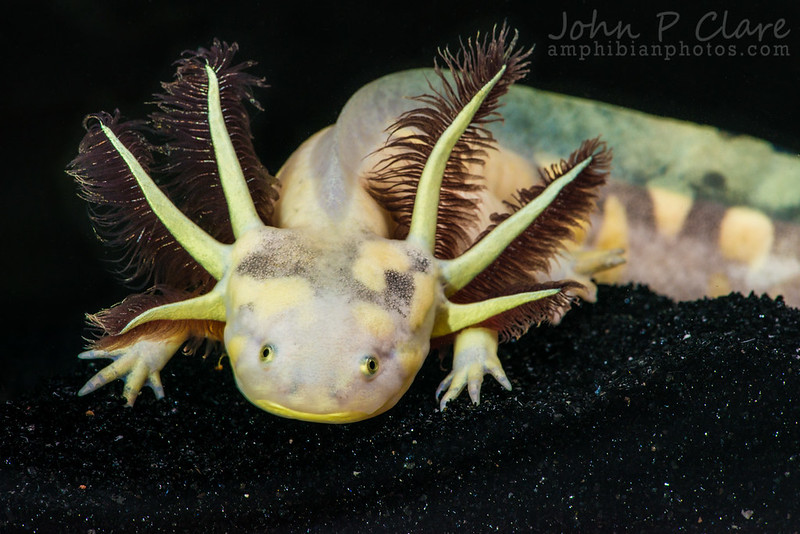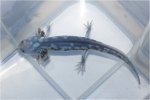- Joined
- Feb 6, 2001
- Messages
- 8,173
- Reaction score
- 429
- Points
- 83
- Age
- 46
- Location
- USA
- Country
- Ireland
- Display Name
- John Clare
As many of you know, I bred my Barred Tiger Salamanders in April and June this year. A few friends and I raised about half of the 2000 eggs and out of all of them we found one particularly special individual. It's Hypomelanistic (it produces very little melanin - the dark pigment in the skin). I believe it's also somewhat Hypoxanthic (relatively little yellow pigment) except for its bars. Anyhow, it's now about 20 cm long (8 inches) and showing signs of slowly metamorphosing. I recently spoke to a friend who lives in the locality where I collected my tigers and he mentioned (before I told him about mine) that he saw a few hypomelanistic individuals 2 years ago in the wild. Anyhow, here's our (hi Jaymes!) friend a couple of weeks ago. Not sure if it's male or female, but I have a feeling it's male.



My hope is to breed this individual in 2014 with one of its parents and see what happens! I expect this individual will be a silver color with yellow stripes after it loses its gills. You would be forgiven for thinking this is an Axolotl (Ambystoma mexicanum)! While I've heard of hypomelanistic Ambystoma mavortium, I've never heard of a hypomelanistic Ambystoma tigrinum, though I have seen albino Ambystoma tigrinum.



My hope is to breed this individual in 2014 with one of its parents and see what happens! I expect this individual will be a silver color with yellow stripes after it loses its gills. You would be forgiven for thinking this is an Axolotl (Ambystoma mexicanum)! While I've heard of hypomelanistic Ambystoma mavortium, I've never heard of a hypomelanistic Ambystoma tigrinum, though I have seen albino Ambystoma tigrinum.

